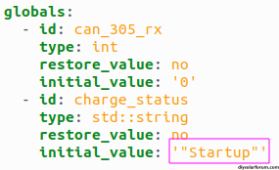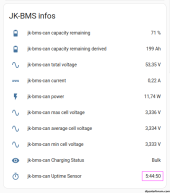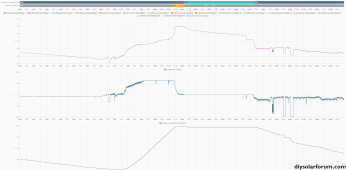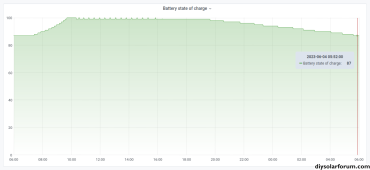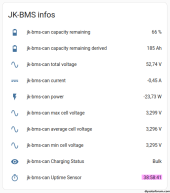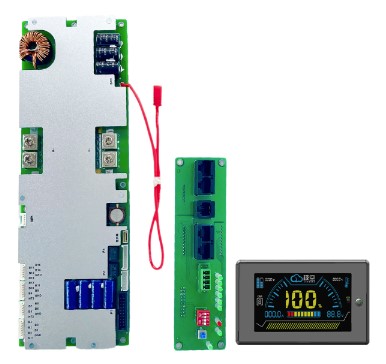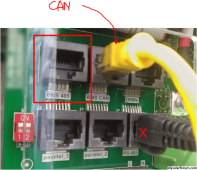uksa007
Solar Enthusiast
- Joined
- May 26, 2022
- Messages
- 239
I did the tests below with a battery at +/- 53.1V
I set the offset to 3V to match the condition of the box marked "A".
Under these conditions when booting the ESP32 the charging status should be on Bulk but we remain stuck on Wait.
Why ?
Normal operation is for it not to charge till Voltage is below: absorption_v - rebulk_offset:
You don't want a rebooting esp32 to be constantly charging the battery.
Think of an edge case where the ESP is rebooting every 30 seconds, it will be constantly microcycling the battery.
My Interface boards do not reboot, I have them up for years, so under normal operation it charges up the battery and then waits for the Voltage to drop as per below:
55.2 - 3 = 52.2 this is where it will request bulk.
53.1 is above 52.2 so it will wait till the voltage is below 52.2v as per normal operation.
Your issues seem to be your rebooting ESP32 fix them and it works as intended.
Edit you are using very old code, Interface boards are shipping with V1.22 FW.
Regards.
Last edited:



